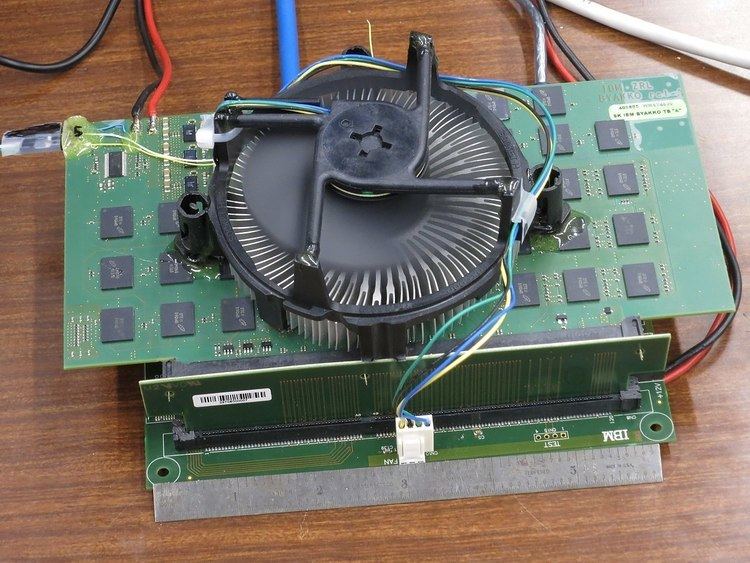 | ||
A microserver is a server class computer which is based on a system on a chip (SoC). The goal is to integrate most of the server motherboard functions onto a single microchip, except DRAM, boot FLASH and power circuits. Thus, the main chip contains more than only compute cores, caches, memory interfaces and PCI controllers. It typically also contains SATA, networking, serial port and boot FLASH interfaces on the same chip. This eliminates support chips (and therefore area, power and cost) at the board level. Multiple microservers can be put together in a small package to construct a microdatacenter.
Contents
History
The term microserver first appeared in the late 90's and was popularized by a Palo Alto incubator; PicoStar when incubating Cobalt Microservers. Microserver again appeared around 2010 and is commonly misunderstood to imply low performance. Microservers originate from the embedded market, where due to cost and space these types of SoCs appeared before they did in general purpose computing. Indeed, recent research indicates that emerging scale-out services and popular datacenter workloads (e.g., as in CloudSuite) require a certain degree of single-thread performance (with out-of-order execution cores) which may be lower than those in conventional desktop processors but much higher than those in the embedded systems.
A modern microserver typically features medium-high performance at high packaging densities, allowing very small compute node form factors. This can result in high energy efficiency (operations per Watt), typically better than that of highest performance processors.
One of the early microservers is the 32-bit SheevaPlug. There are plenty of Consumer-Grade 32-bit microservers available, for instance the Banana Pi as seen on Comparison of single-board computers. Early 2015, even a 64-bit Consumer-Grade microserver is announced. Data-Center-grade microservers need to be 64-bit and run server class operating systems such as RHEL or SUSE.
Commercialization
In 2015 microservers, sometimes also (confusingly) called 'scale-out servers' or even 'scale-in servers' are getting plenty of attention in the press.
